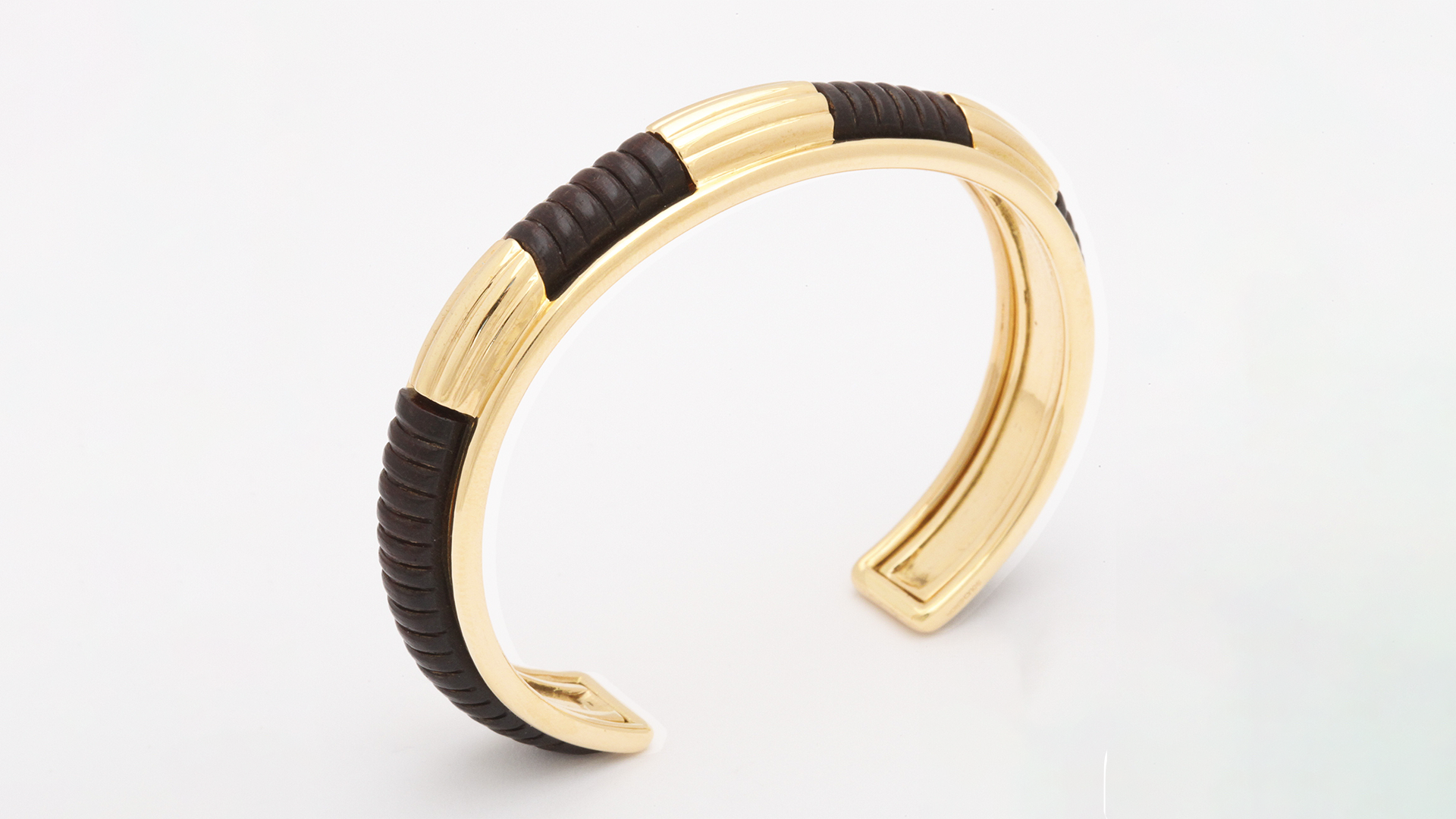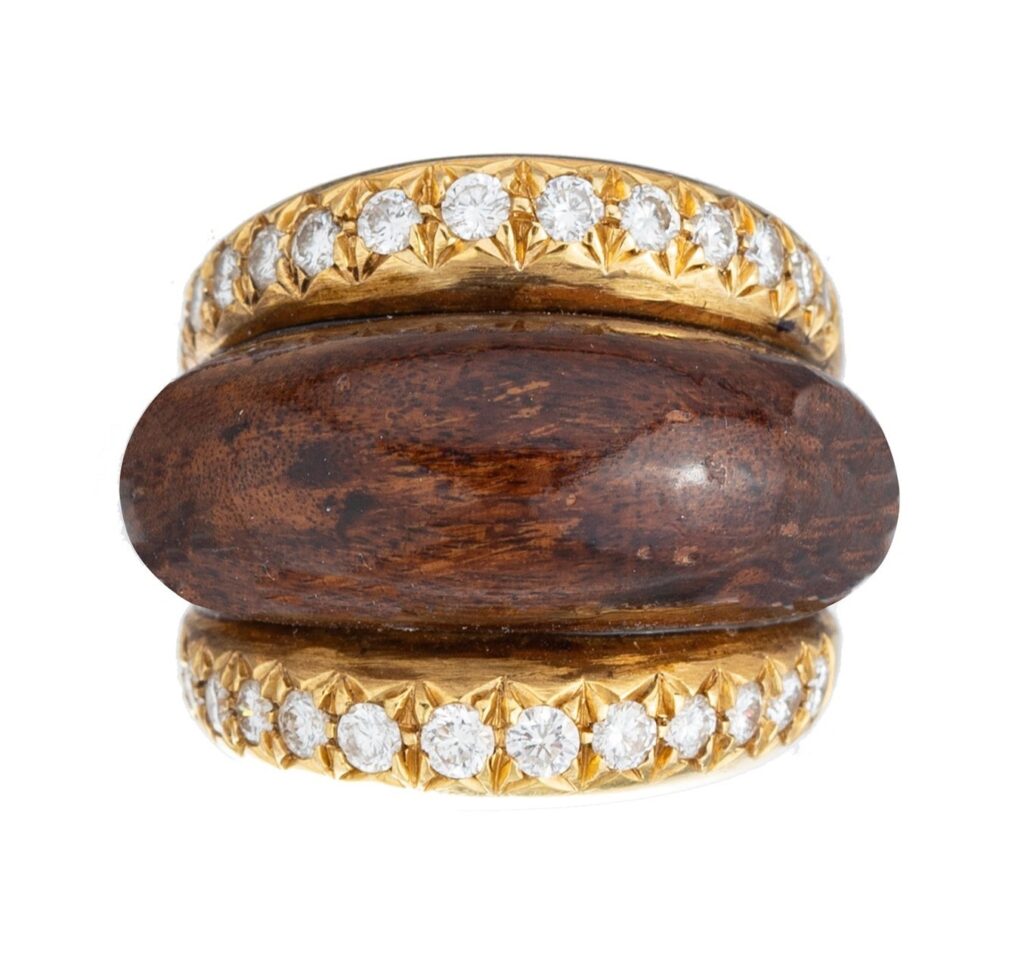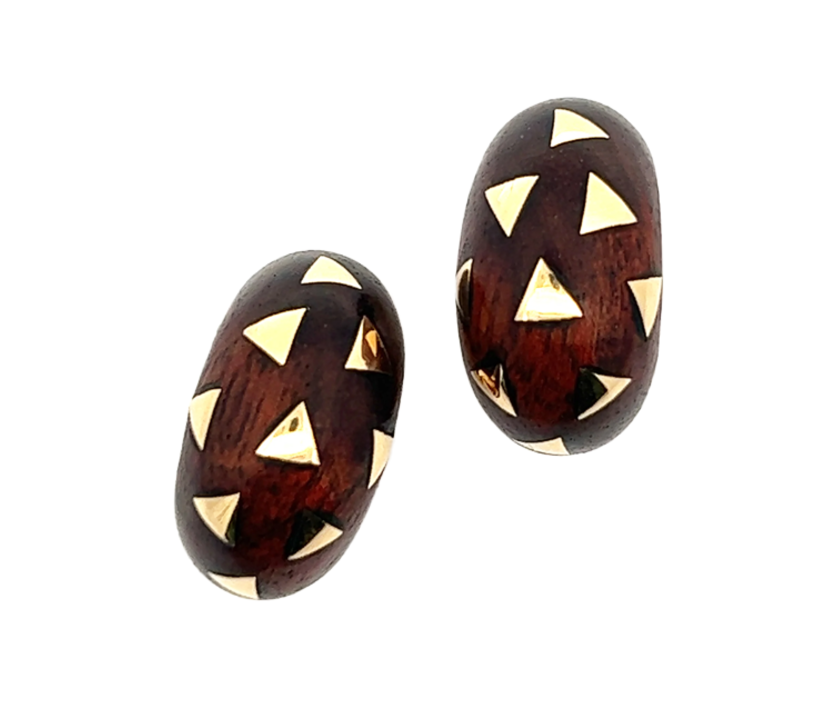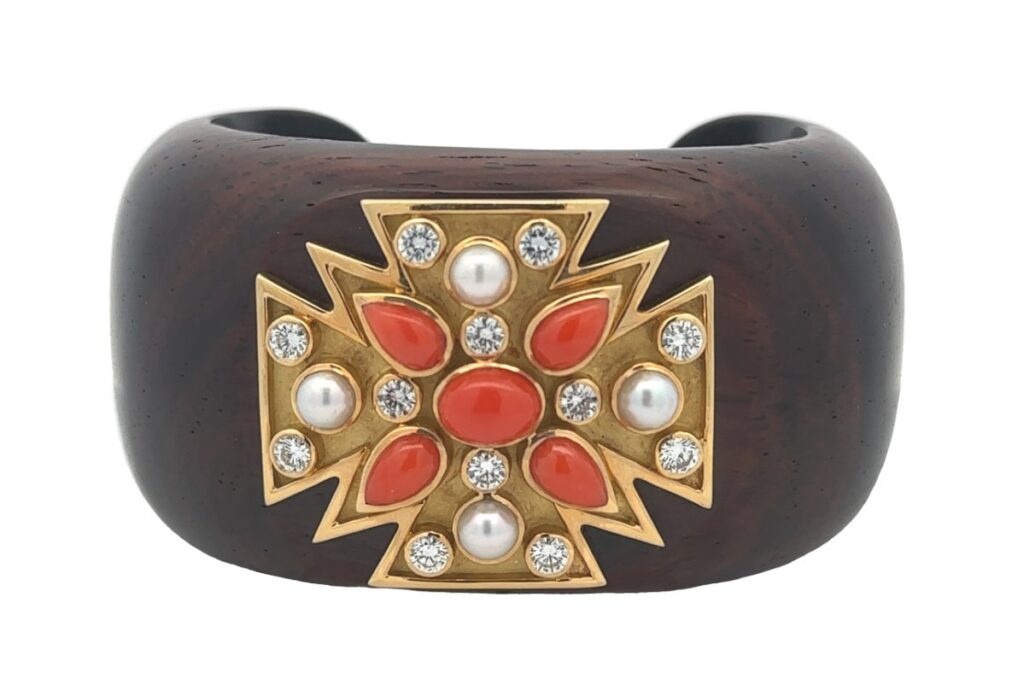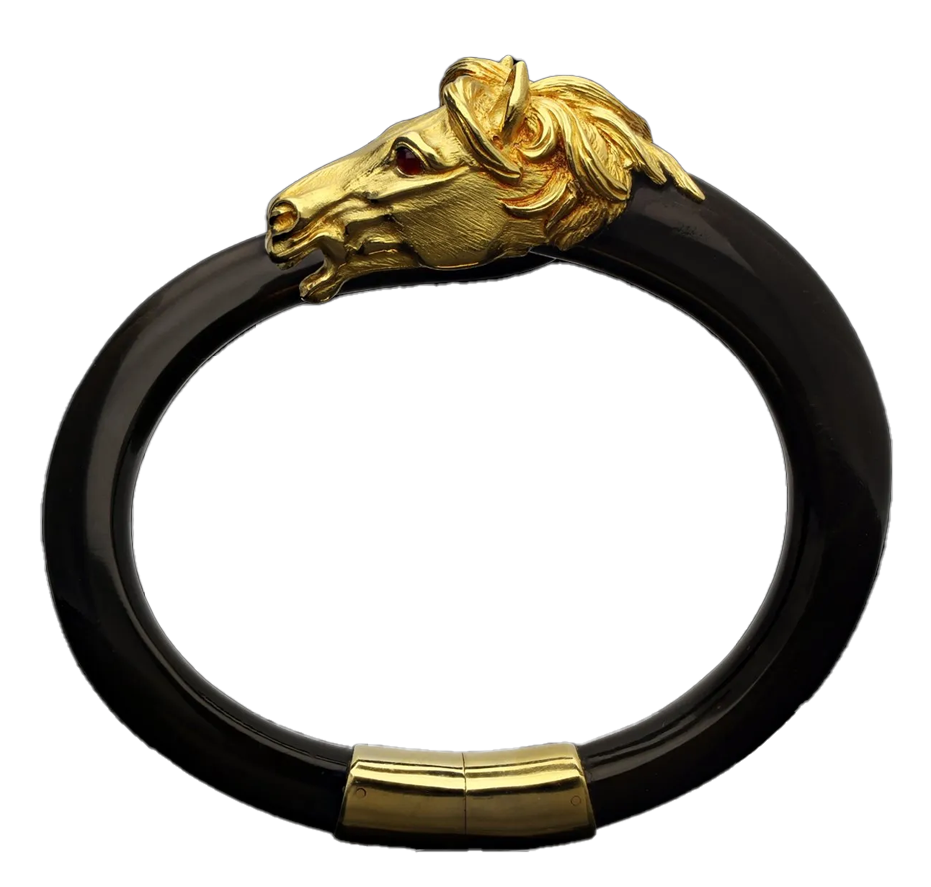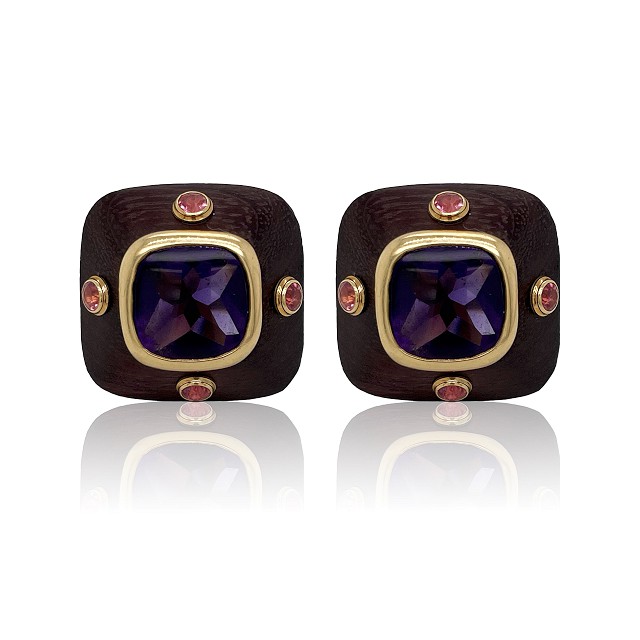Whenever we think of jewelry our thoughts immediately go to glittering gemstones and precious metals. But what if something unexpected was treated as a precious material that changed our perceptions of it? While unexpected, the simplicity of wood holds a special place in jewelry. From ancient civilizations to contemporary jewelry designers, wood has been a part of the language of jewelry for millennia.
Early Wood Jewelry
Wood is readily accessible, inexpensive and easy to carve. The ancient Egyptians carved beads from wood and in Africa wood was carved into pendants, while in Asia, traditional motifs were carved into wooden jewelry. In the Middle Ages wood was carved into rosaries, crosses, rings and pendants. While it’s expected that working people would acquire wooden jewelry, wealthy people who didn’t want to appear too extravagant during a time when it was considered immoral to flaunt your wealth, also wore wood jewelry.
Wood Fuses With Precious Metals
When the Renaissance rolled around wood jewelry was fashionable among the upper classes and it was during these years that artisans began to make pieces from wood and precious metals. During the Victorian years, wood specifically bog oak, which is oak that has been buried in peat bog for hundreds of years giving it a very dark brown or blackish hue, was used to create mourning jewelry that was worn while grieving the loss of a loved one. Ebony was also used to create fashionable, understated jewelry for mourning wear.
Wood Types
Different types of wood have been used in jewelry making. Ebony is favored for its black hue and smooth finish, rosewood has a reddish-brown color and a distinct grain pattern, olive wood has also been used for its warm tones and well-defined grain. Other woods have also been incorporated in jewelry design depending upon the artisans choices. Many high-end design houses have integrated wood into their designs, including Van Cleef & Arpels, Fred Paris, Verdura, Boucheron, Gay Frères and Seaman Schepps who made gold and wood link bracelets that were favored by fashionistas in the early to mid-20th century and remain popular today. Van Cleef & Arpels had an entire collection named “Touch Wood” that was meant to bring good luck. It was marketed between 1916 and 1920.
Bohemian Love Affair
Wood had its place in early 20th century jewelry, sometimes pairing with lucite or bakelite in the 1930s and 1940s creating a more avante garde look. Wood jewelry took off again in a big way in the 1960s and 1970s, fueled in part by fashion’s love affair with bohemian style. Wood fused with precious metals and sprinkled with gemstones spoke to rich hippie chic that was both on trend and innovative. Wearing wood jewelry during those two decades also showed a connection to nature.
While wood jewelry is very durable, it’s usually waxed to make it sturdier, it does require some special care. Avoid moisture at all costs. Take your wood ring off when washing your hands and take off any other wood jewelry before swimming or showering. To keep the wood looking its very best, wipe it off with a clean, soft, dry cloth and then rub a tiny drop of olive or coconut oil into the wood to keep it from drying out and to maintain its sheen.
Fifth Wedding Anniversary
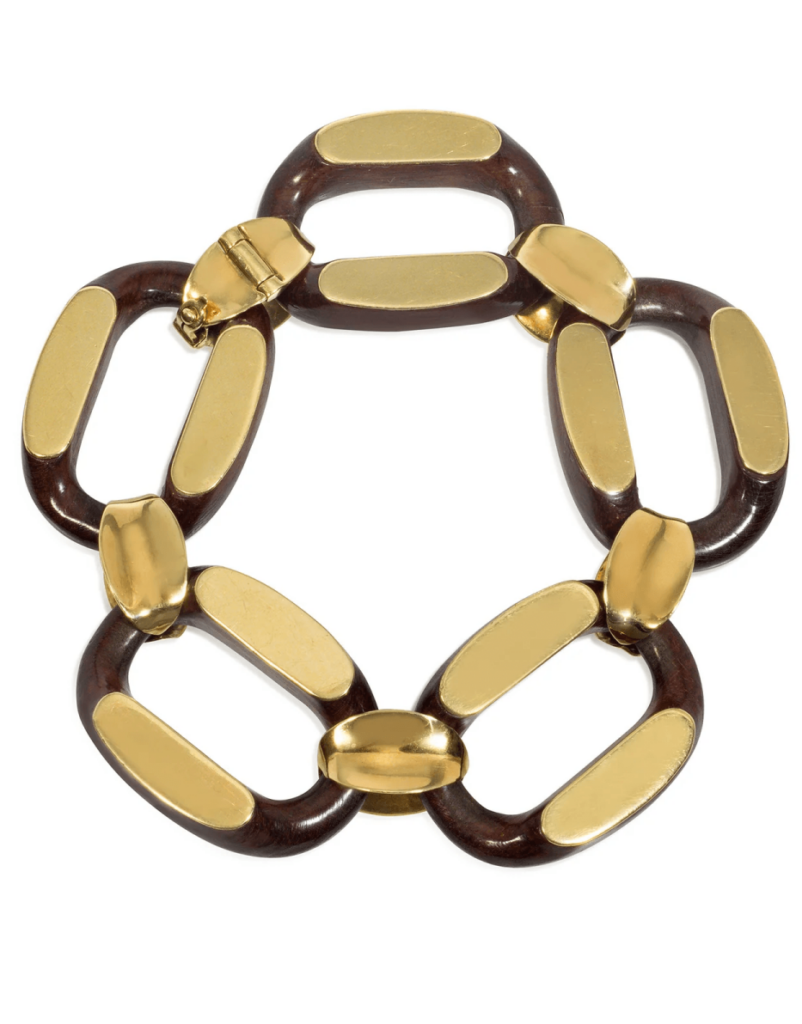
Wood is associated with the fifth wedding anniversary, so if you’re looking for a unique anniversary gift made from wood, consider a bejeweled ring or bracelet made from this simple material.
There’s a certain edgy, coolness to wood jewelry. Readily available, wood has been a part of jewelry making for thousands of years, elevating it from an everyday object to a treasured material by carving it and embellishing it with precious metals and gemstones creating stylish jewels that harmonize beautifully with denim and boho chic.
Top of Page: Wood and 18-karat gold cuff, signed Boucheron, 1970s, courtesy Pat Saling (@patsaling).
Authored by Amber Michelle
